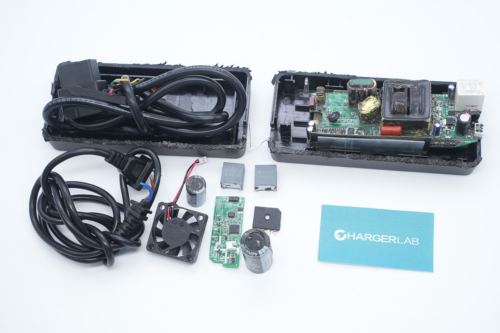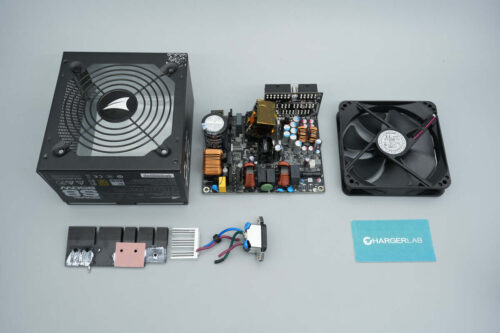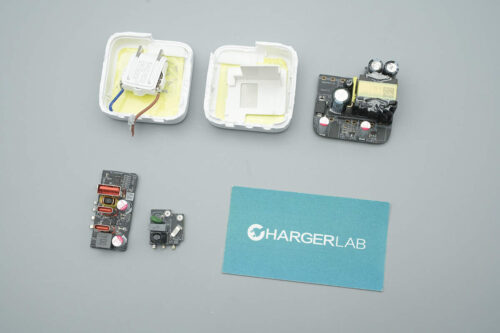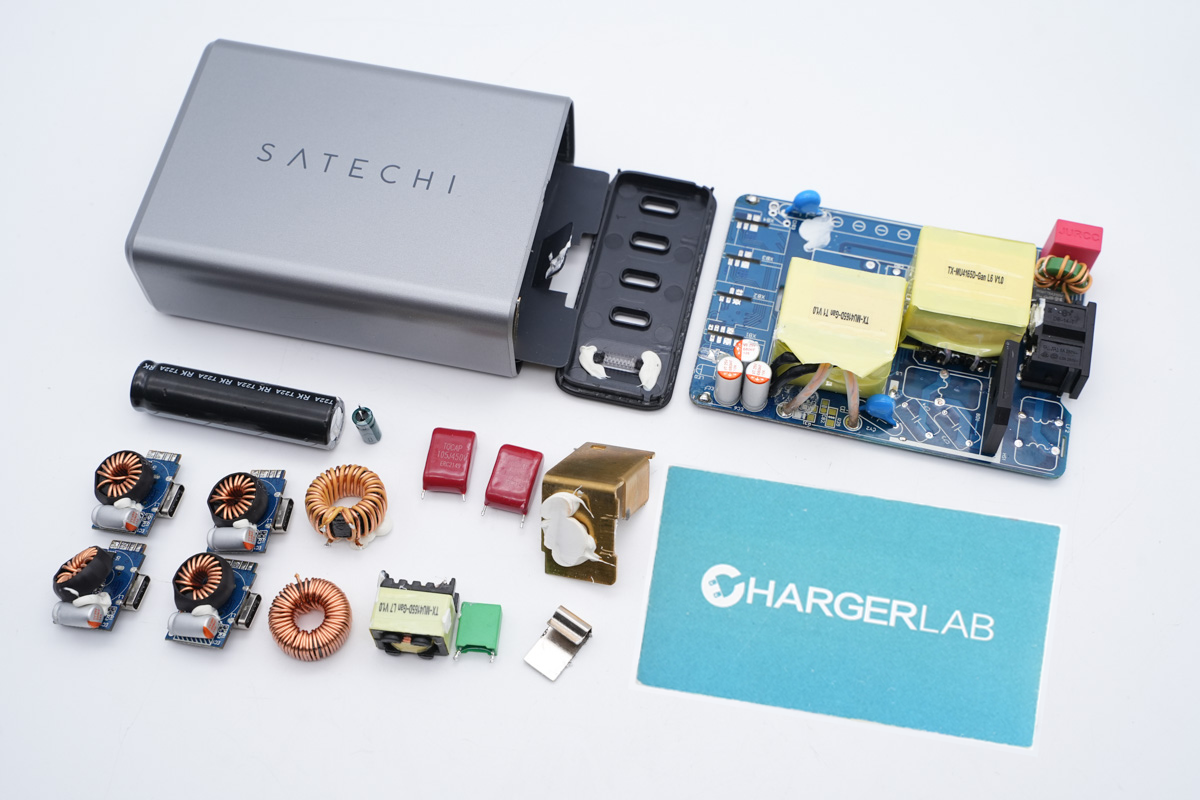Introduction
The Xiaomi 15S Pro is a specially developed flagship smartphone based on the Xiaomi 15 Pro, created to commemorate the 15th anniversary of Xiaomi Group. Compared to the Xiaomi 15 Pro, the 15S Pro features significant upgrades in display, camera, and thermal management, and is equipped with Xiaomi’s newly launched 3nm self-developed mobile SoC — the Xring O1, demonstrating Xiaomi’s strong commitment to innovation.
The Xring O1 has garnered significant attention and acclaim, attracting numerous well-known tech influencers and media outlets for hands-on reviews. The phone delivers an extremely smooth overall user experience, with excellent performance in gaming and video playback. Compared to other flagship chips such as Apple’s A18, Qualcomm’s Snapdragon 8 Elite, and MediaTek’s Dimensity 9400+, the Xring O1 holds its own impressively, marking Xiaomi’s official entry into the world’s top tier of chipmakers.
The release of the Xring O1 is widely regarded as a breakthrough. As the first independently designed and developed 3nm chip in mainland China, it holds historic significance and even received coverage from China Central Television (CCTV). Its integration into the Xiaomi 15S Pro has significantly boosted public interest and market support for the new device, contributing to strong sales and reinforcing Xiaomi’s position as a cutting-edge technology brand.
We got this phone as soon as possible, and we will disassemble it to see the detailed internal design.
Product Appearance

The Xiaomi 15S Pro features a 6.73-inch all-equal-depth micro-curved 2K AMOLED display. This is a low-power consumption screen that uses a custom M9 luminous material and a dual-microcavity structure to enhance brightness efficiency while reducing power usage by up to 24%. It supports a 120Hz adaptive refresh rate and achieves a peak brightness of 3200 nits.
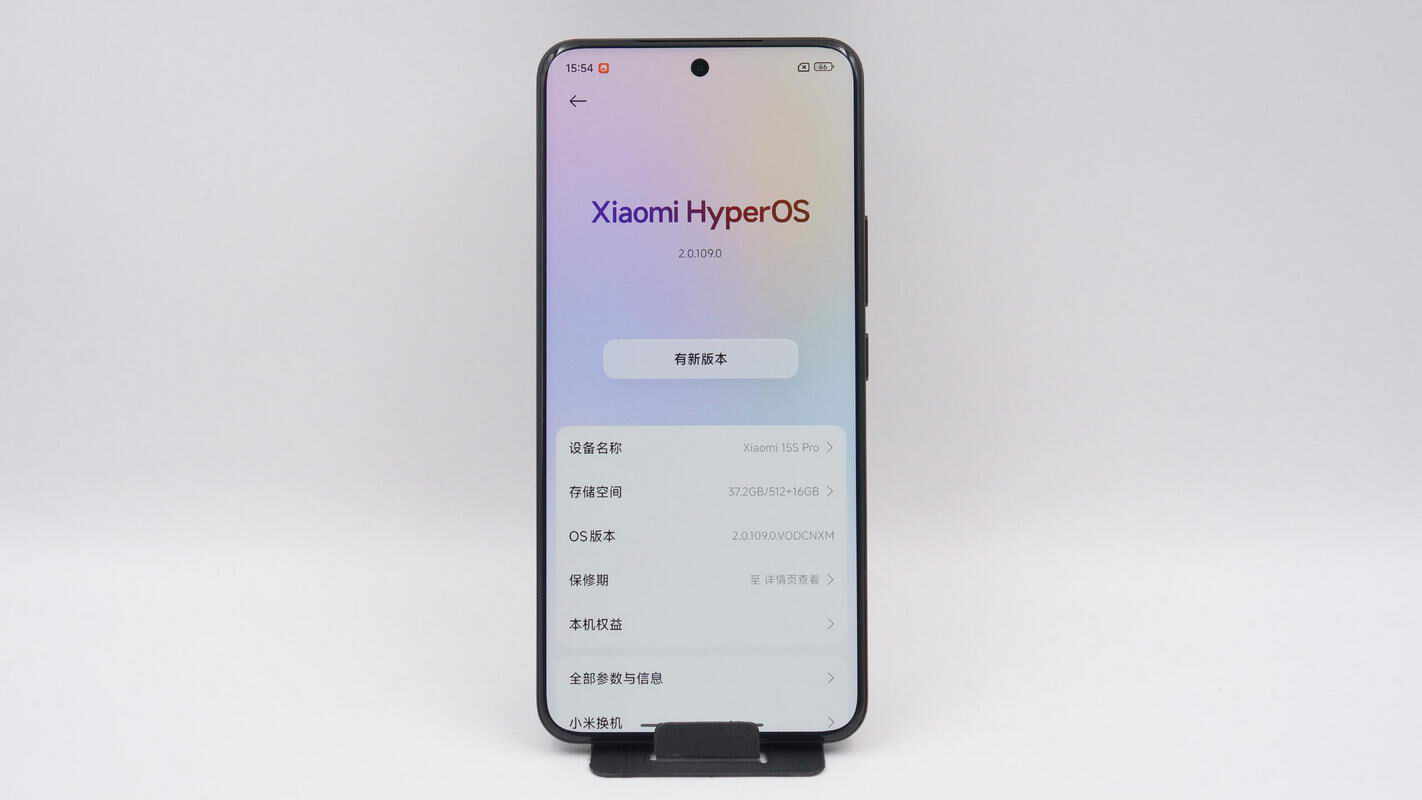
It runs on Xiaomi HyperOS 2. The one we got is the Dragon Scale Fiber Edition, equipped with 16GB of RAM and 512GB of storage.
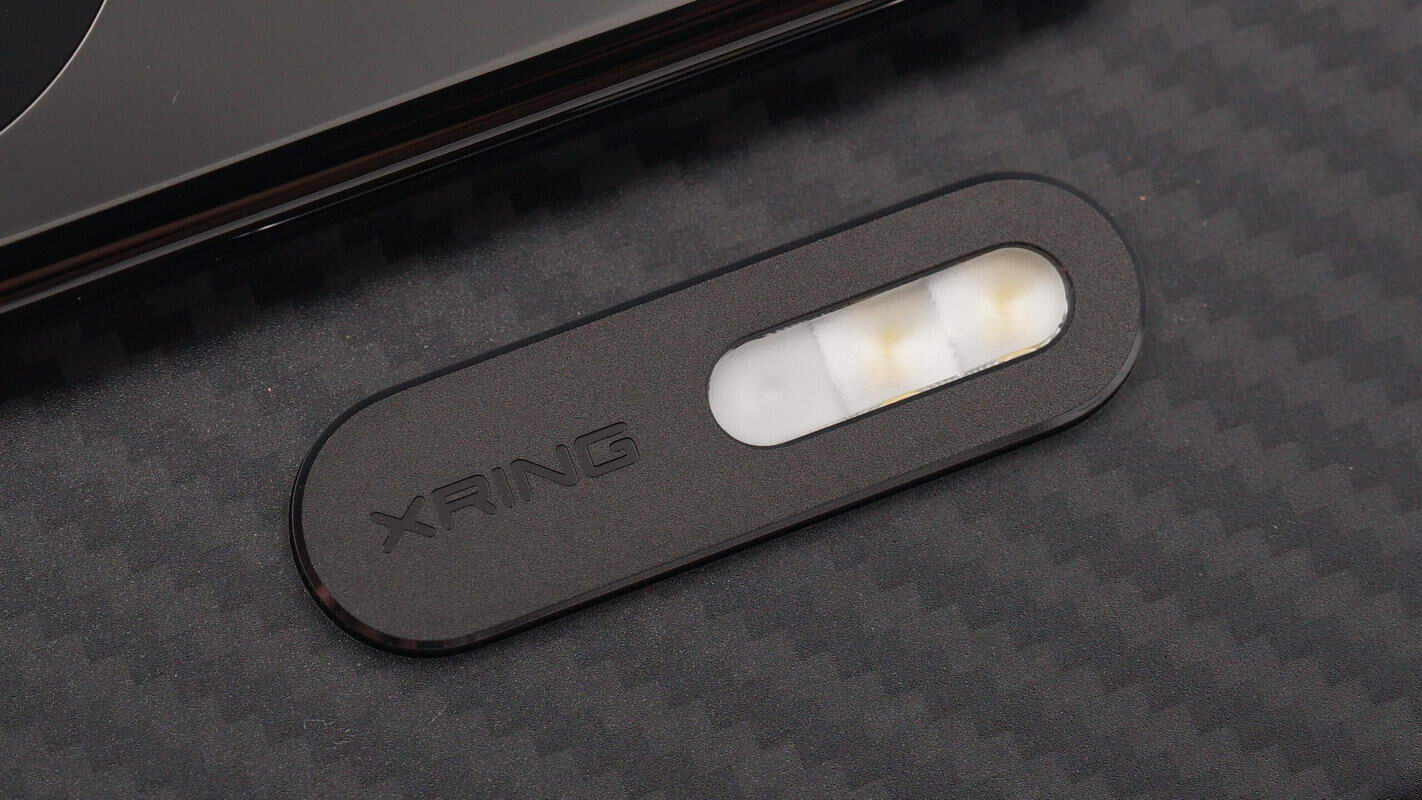
An XRING logo has been added near the flash module, indicating that the device is equipped with the Xring O1 chip.

The rear camera module features three 50MP Leica optical lenses covering the full focal range, supporting 4K night video recording across all focal lengths, delivering outstanding performance.
Teardown
Let’s first take a look at the phone’s biggest highlight — the teardown of the mainboard featuring the Xring O1.
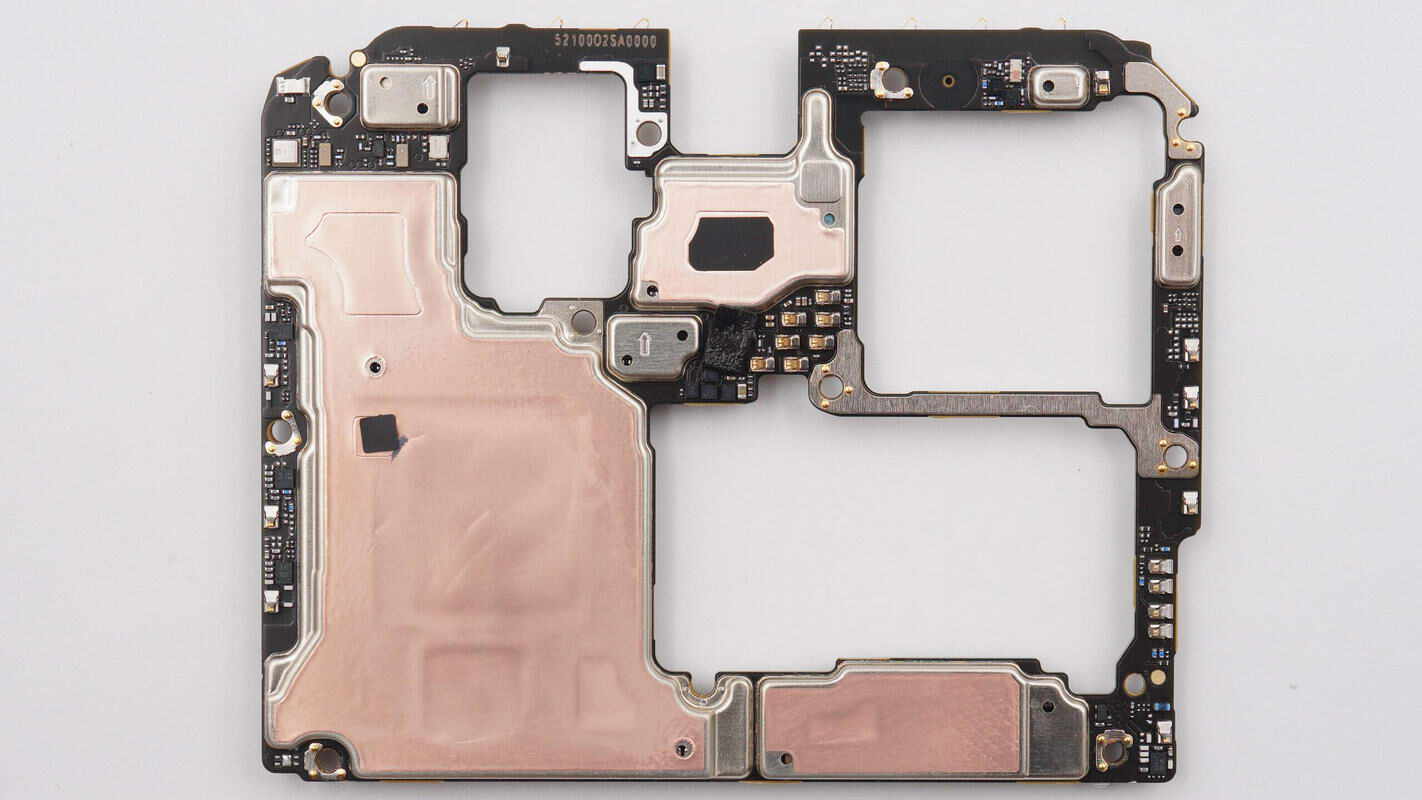
The left side of the mainboard houses the SoC, which is covered with copper foil to enhance heat dissipation. The back of the mainboard features a dual-layer design to improve space utilization. Metal plates are soldered on both sides of the mainboard at structurally weak points for reinforcement.
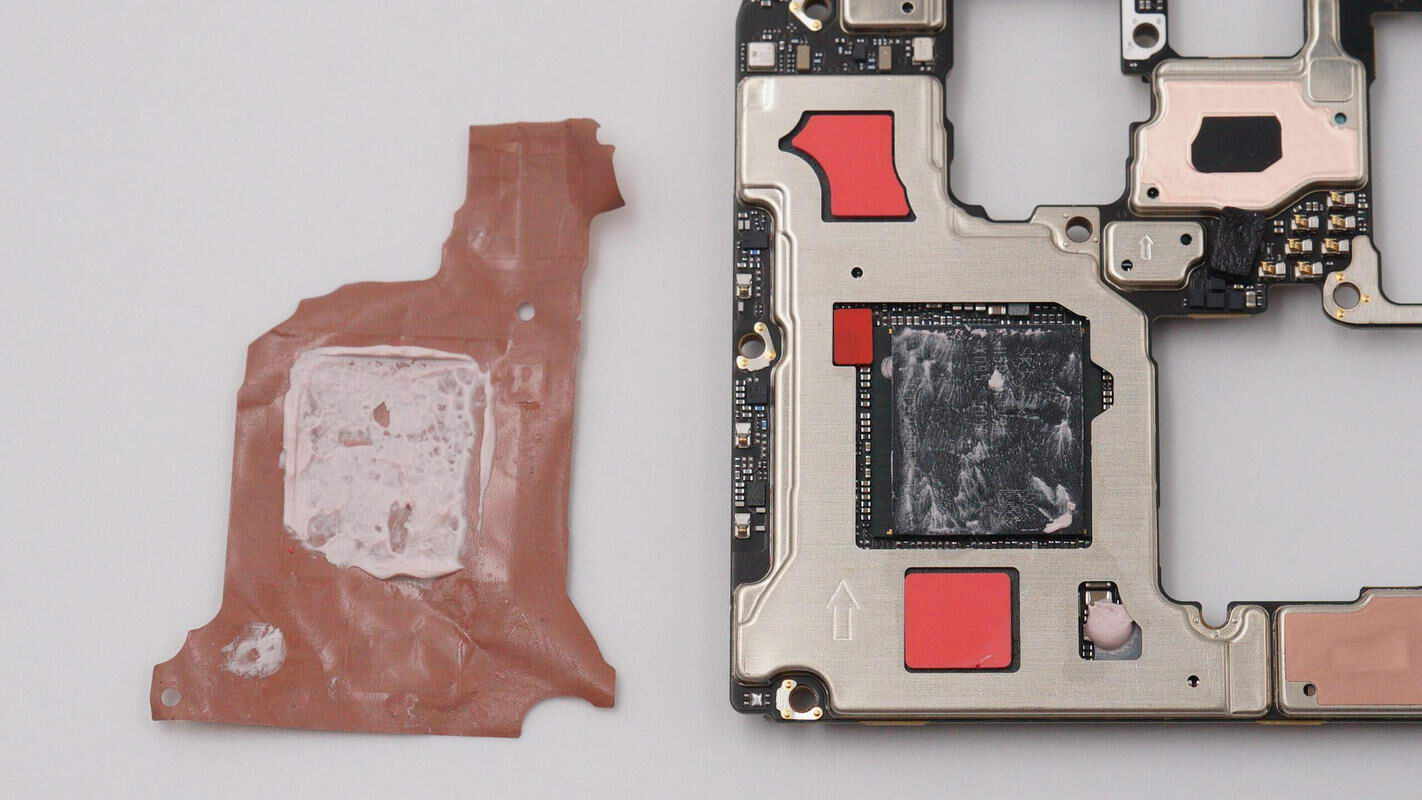
Peeling off the copper foil on the mainboard revealed that thermal gel is applied above the SoC. Red thermal pads are also found on the modem chip and the UFS chip.
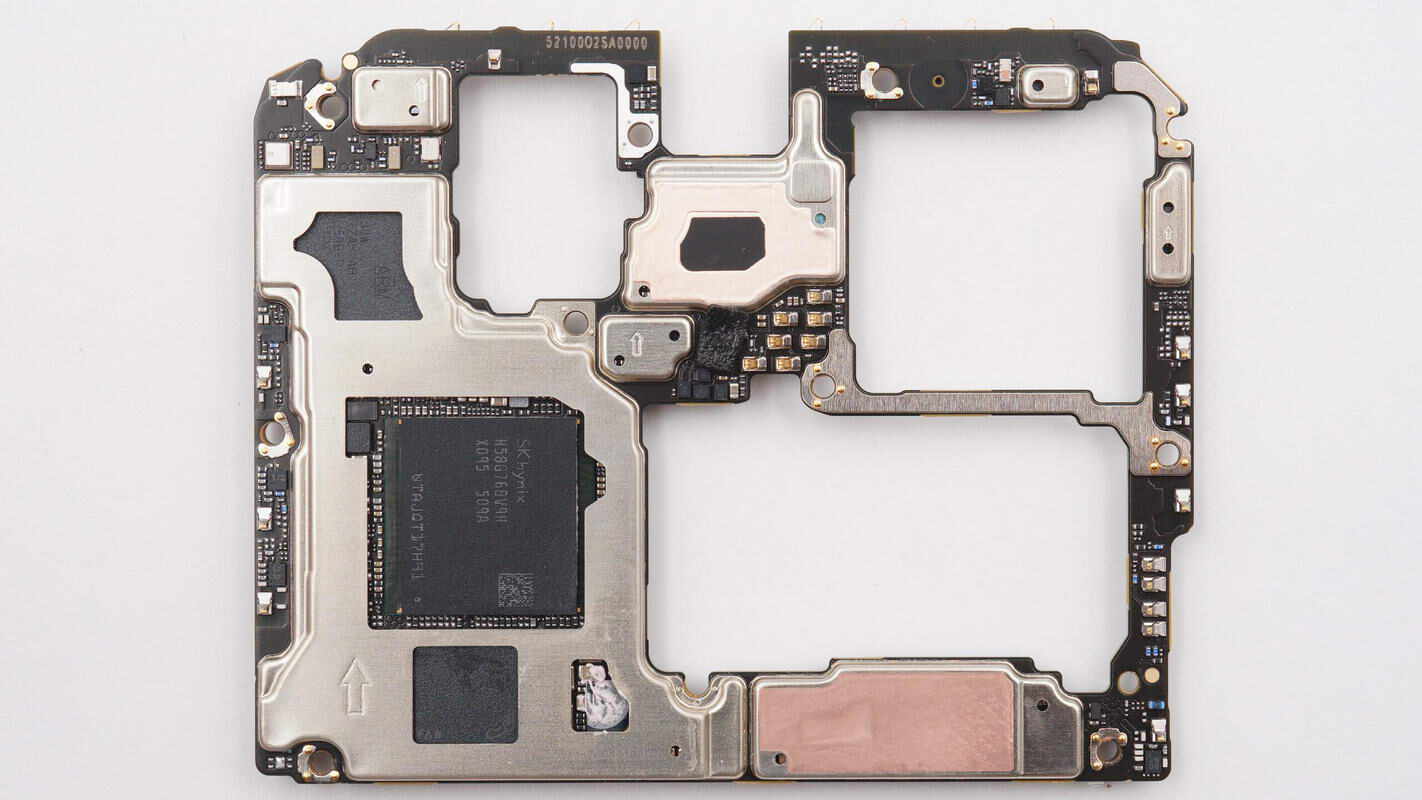
The square opening on the shielding cover exposes the SoC, which features a dual-layer packaging design.
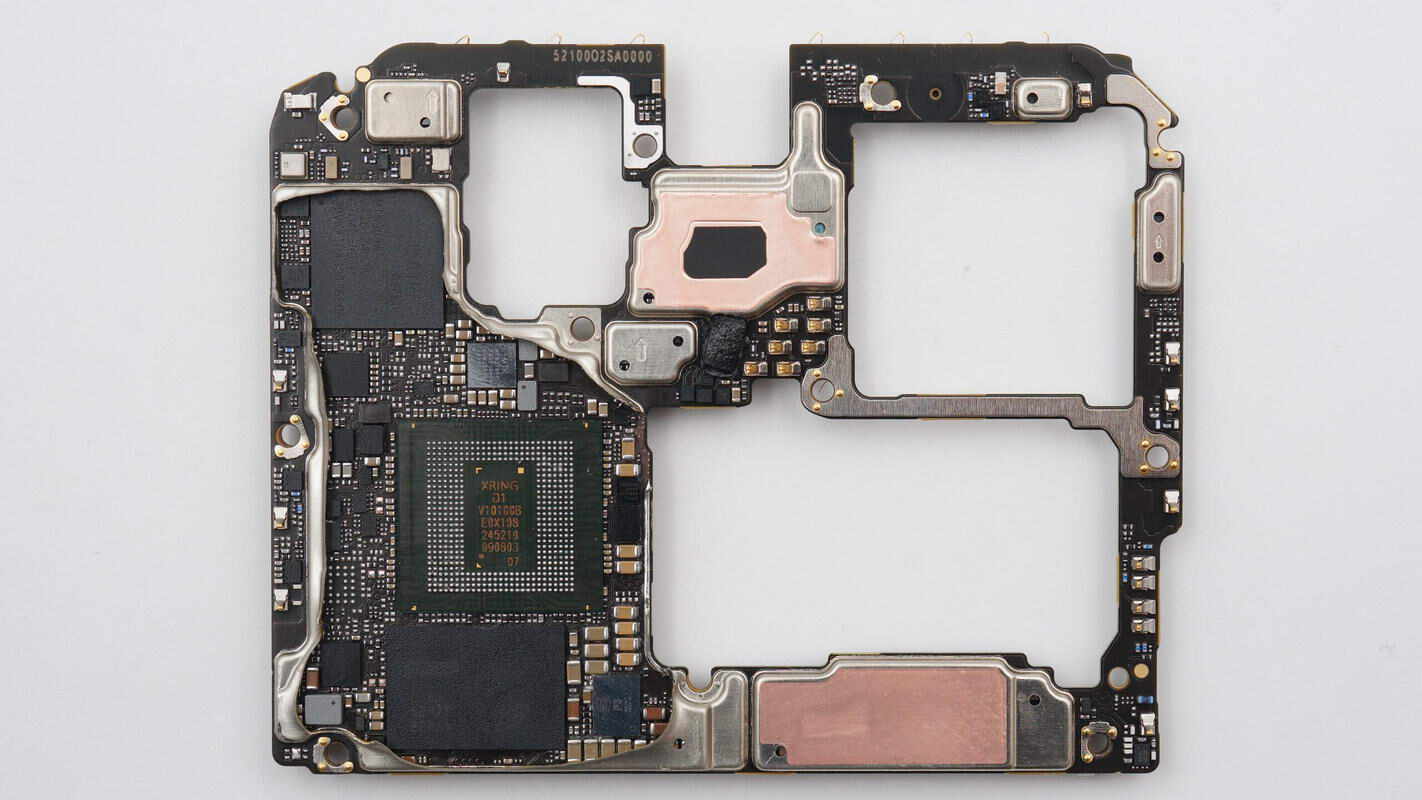
After removing the memory chip above the Xring O1 processor, the true appearance of the chip was finally revealed. The silkscreen on the Xring O1 is exceptionally clear, which also helps dispel doubts and confirms that this chip is fully self-developed.
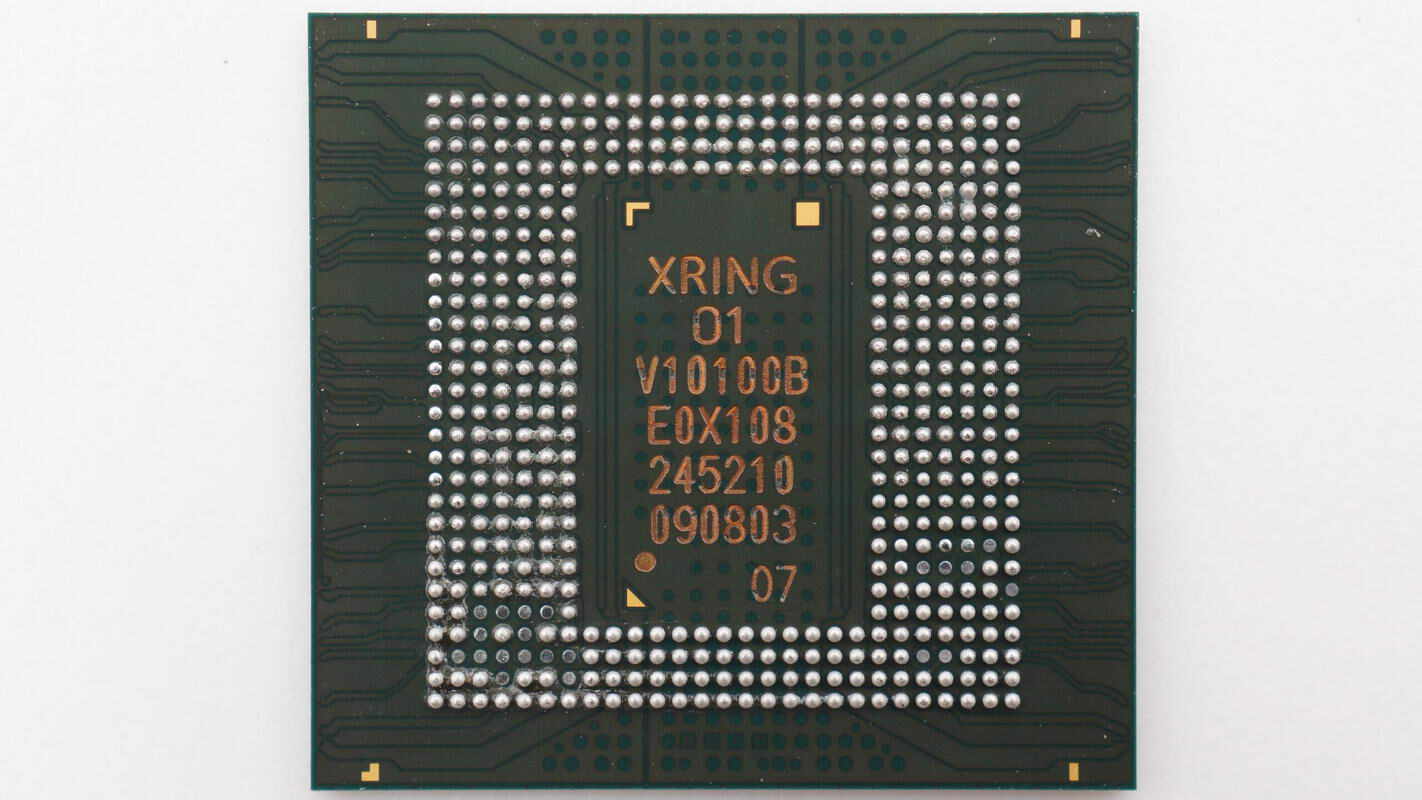
The Xring O1 3nm processor has been carefully taken off from the board. It is built using the third-generation 3nm process and features a ten-core, four-cluster CPU design, including dual super-large Cortex-X925 cores with a peak clock speed of 3.9GHz. It also integrates a 16-core Immortalis-G925 GPU, a fourth-generation image processor, and a six-core NPU. With 19 billion transistors, the chip achieves an AnTuTu benchmark score of 3,004,137, placing its performance firmly within the top tier.
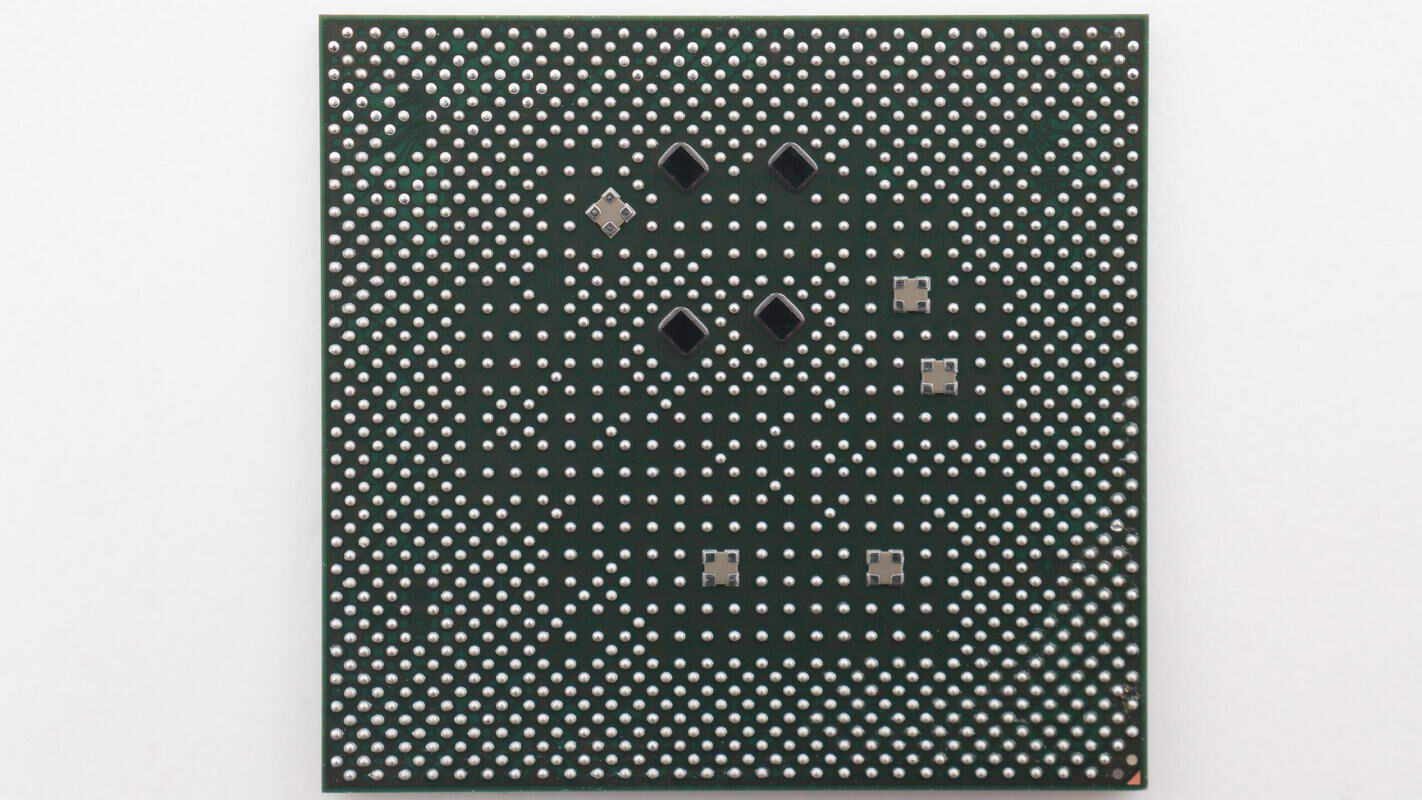
On the back of the Xring O1, there are four silicon capacitors and five ceramic capacitors used to suppress power noise. It is the first smartphone processor chip independently developed in China to use silicon capacitors.
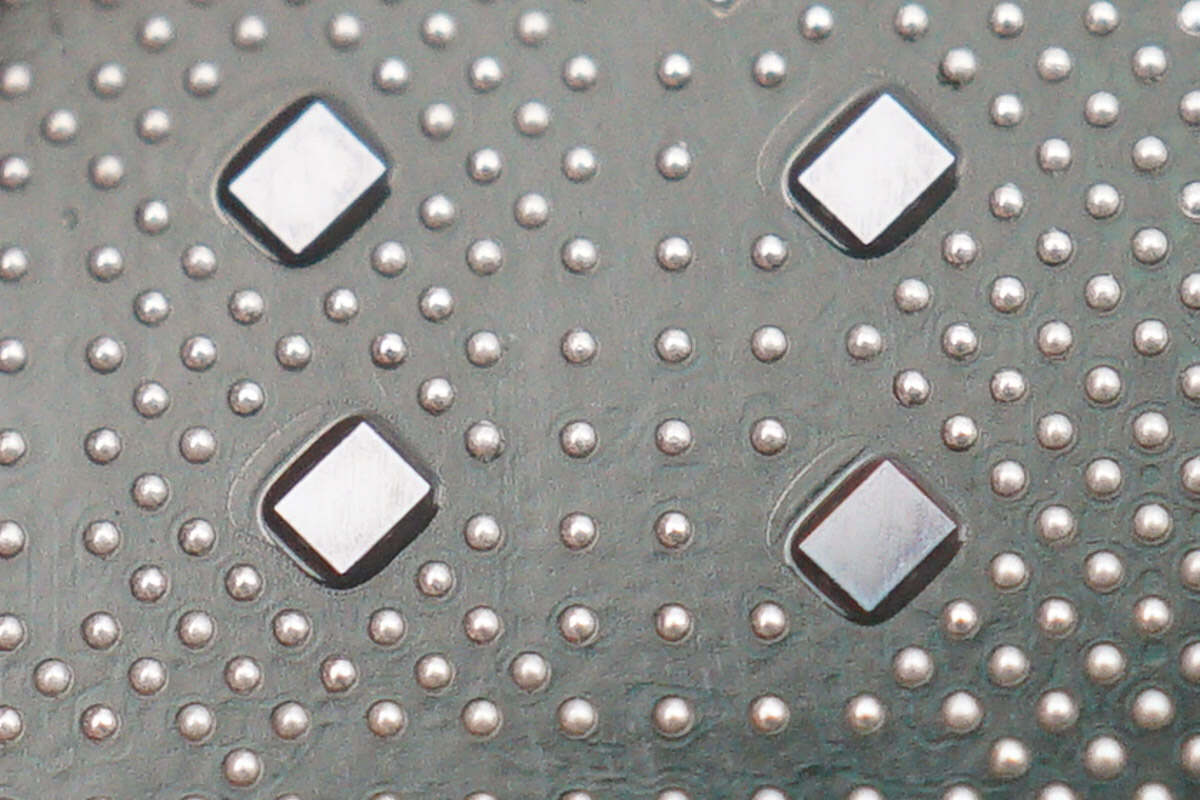
The silicon capacitors soldered on the back of the Xring O1 are sourced from Empower Semiconductor. Each capacitor measures only 0.64 × 0.5 mm with a thickness of 75 μm and a capacitance of 230 nF, supporting an operating temperature range of -40 to 125°C. These silicon capacitors maintain stable capacitance under varying voltages and temperatures, feature an ultra-low ESL of 6.5 pH, and have a high resonant frequency up to 300 MHz. They are highly suitable for packaging integration and substrate embedding, providing power filtering for high-performance SoCs based on advanced process technologies. Model is EC1004B.
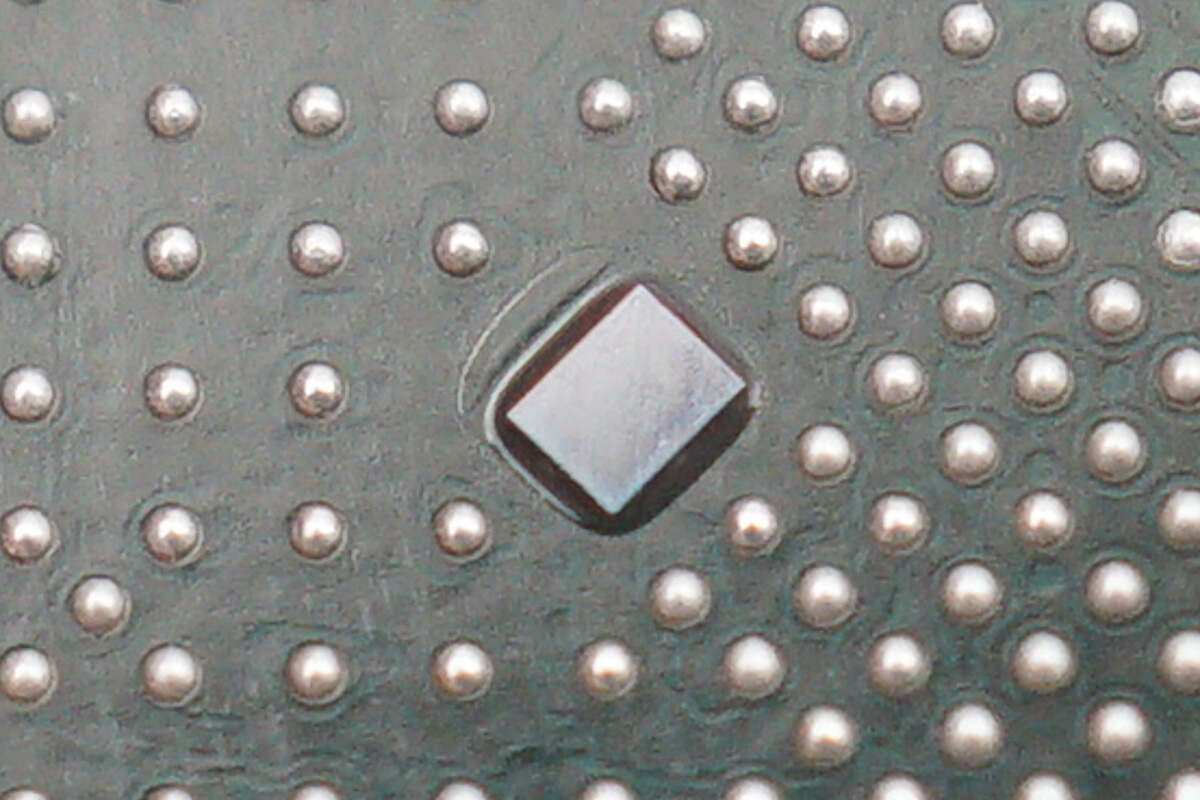
The Empower Semiconductor EC1004B silicon capacitor features an ultra-thin design that allows it to be soldered on the back of the processor, between the solder balls. Its ultra-low equivalent series resistance (ESR) and equivalent series inductance (ESL) reduce power noise in the target frequency band by 50%, improving processor stability and enabling smoother performance at higher operating frequencies. Notably, Xring O1 is China’s first self-developed smartphone processor chip to incorporate silicon capacitors.
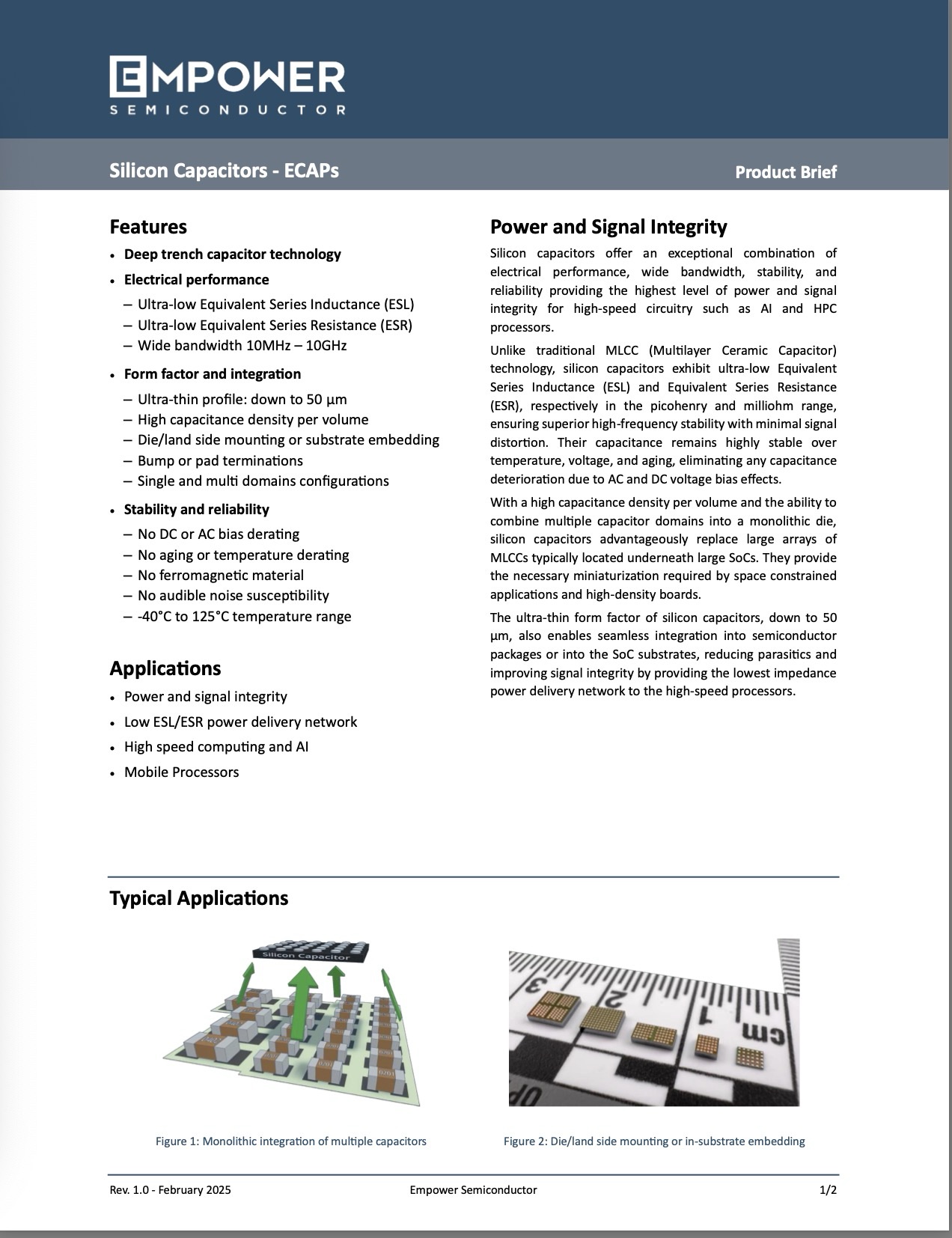
Here is the information about Empower Semiconductor EC1004B.
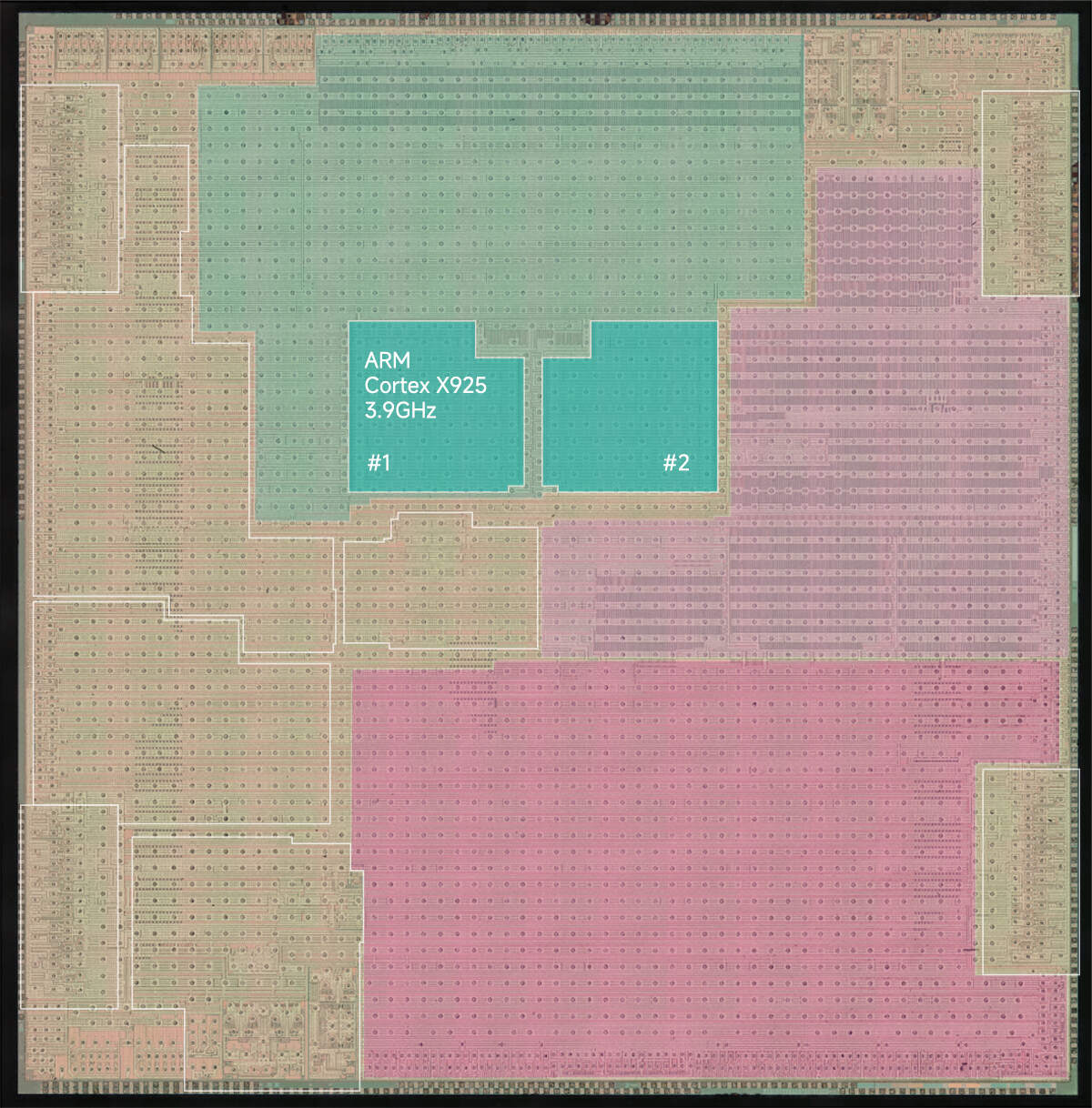
We performed a decapsulation (decap) of Xring O1. By comparing the packaging and internal functional partitioning of the chip, we found that the Empower silicon capacitor is mounted directly on the Cortex-X925 cores. This indicates that the silicon capacitor is prioritized in the high-frequency area to enhance peak performance, reduce power noise, improve processor stability, and enable overclocking, thereby maximizing processor performance.
Industry experts have informed us that Empower’s silicon capacitors are already mass-produced and widely used by many internationally renowned companies such as Intel, Microsoft, Broadcom, Nokia, and Meta, with shipments nearing 100 million units. These capacitors are highly reliable and well-regarded in the industry.
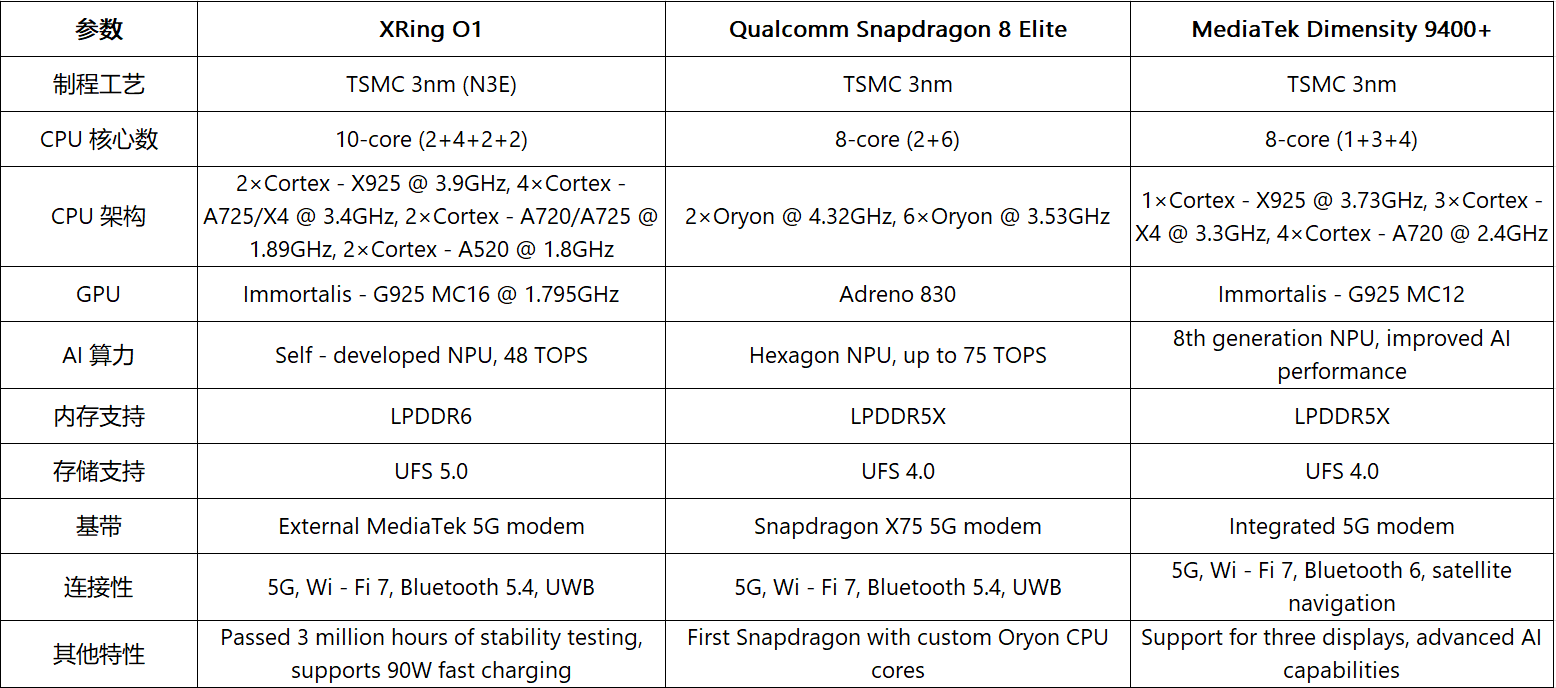
Using publicly available data, we compared the core specifications of the Xring O1 with Qualcomm Snapdragon 8 Elite and MediaTek Dimensity 9400+. The Xring O1 features dual cores clocked at 3.9GHz, which surpasses the Dimensity 9400+’s single core at 3.7GHz, while slightly trailing behind the Snapdragon 8 Elite’s dual cores at 4.3GHz.
For Xiaomi’s first self-developed smartphone processor to enter the top performance tier—and even surpass industry benchmarks in certain aspects—is truly impressive.
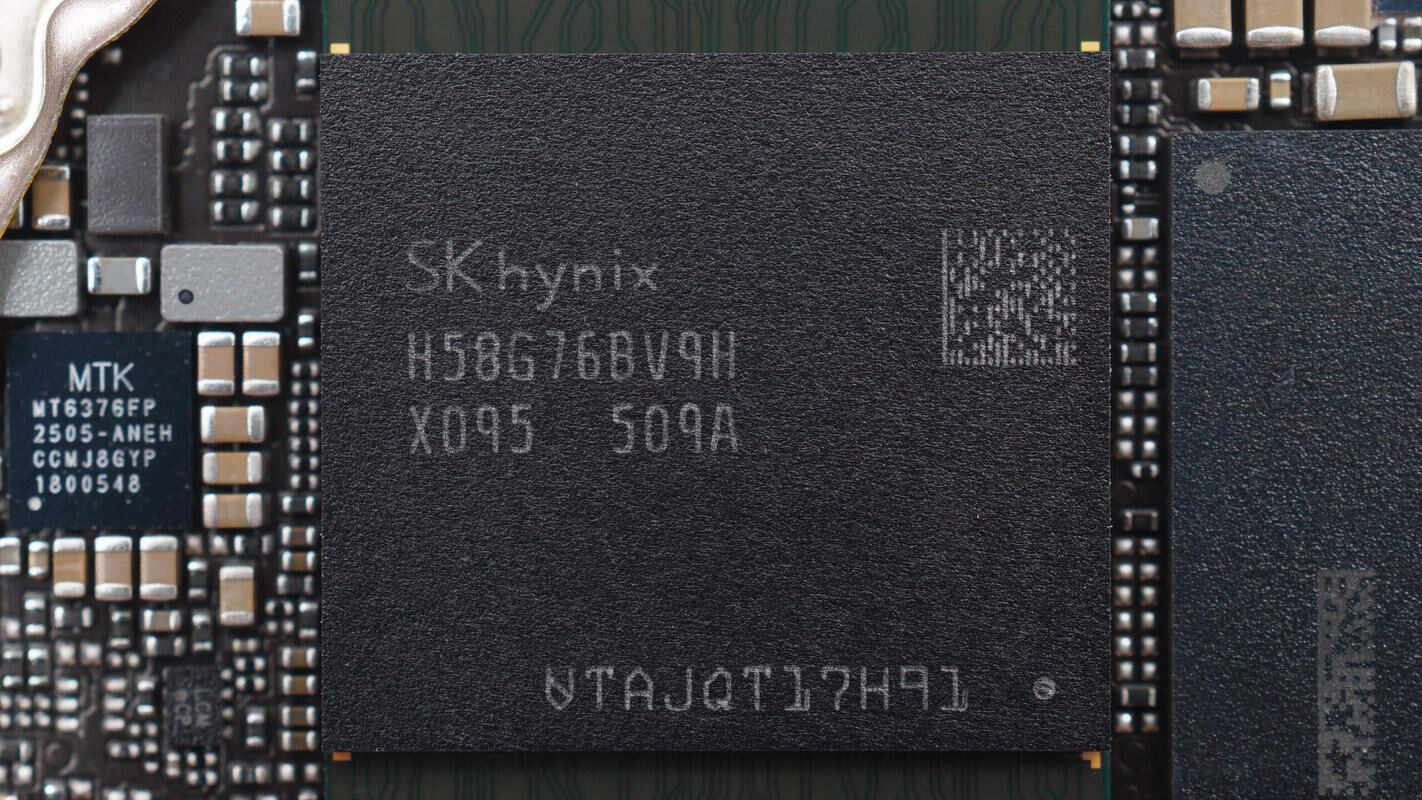
The RAM chip on the upper layer of the Xring O1 is from SK Hynix, model H58G76BV9HX095, and is LPDDR5T memory.

The Micron UFS 4.1 storage chip is marked with 4VA22 JZ624.
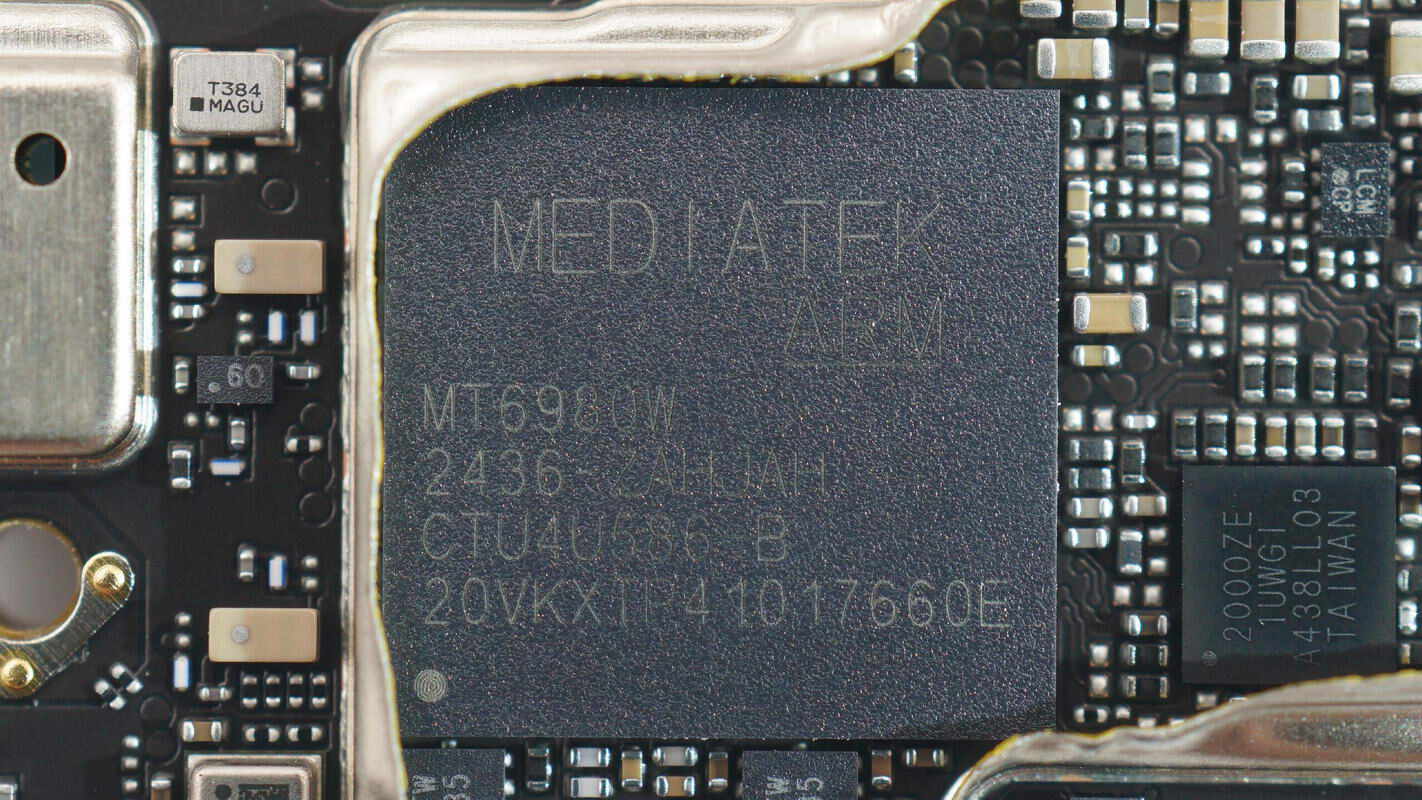
The Xring O1 is paired with an external MediaTek T800 modem chip, model MT6980W.
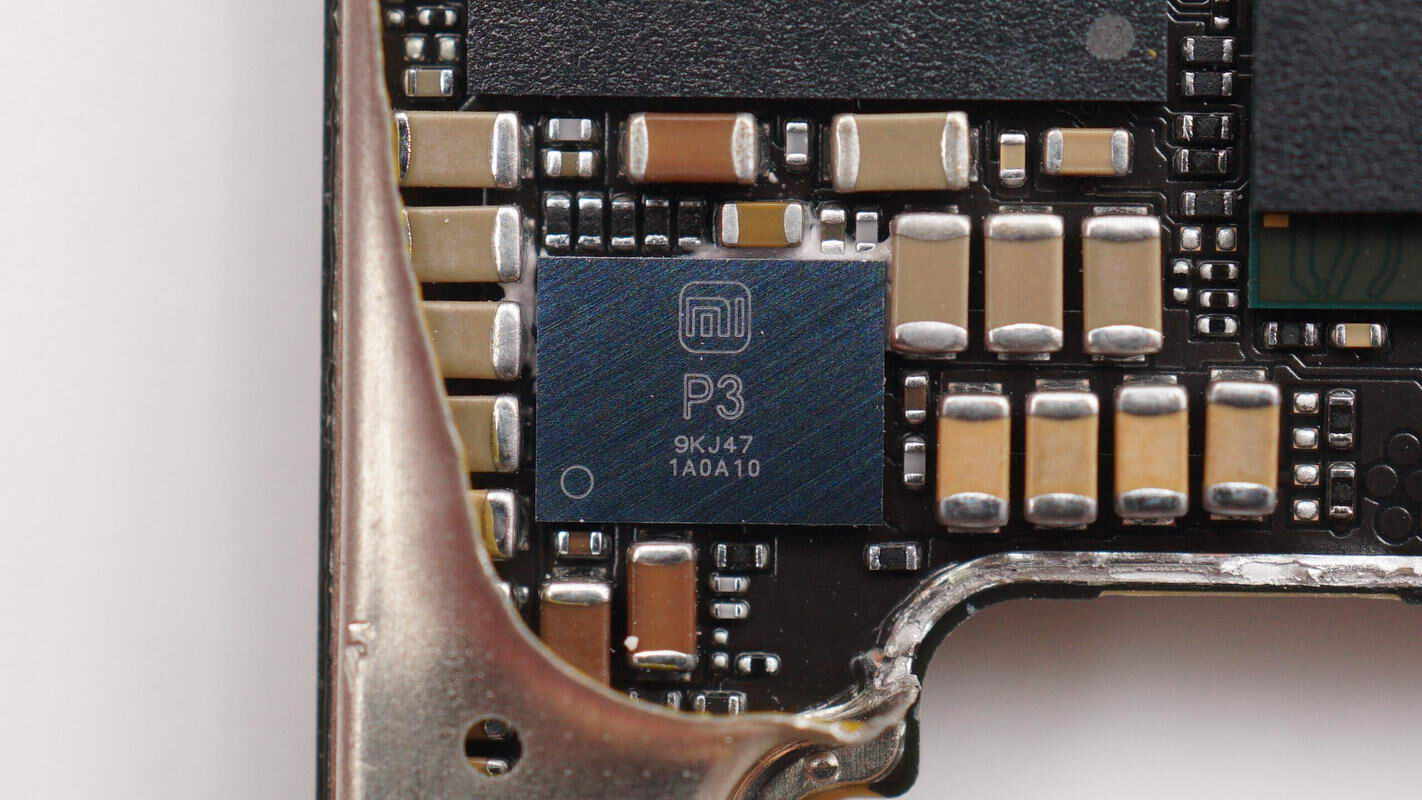
This is the Xiaomi Surge P3 charging chip.
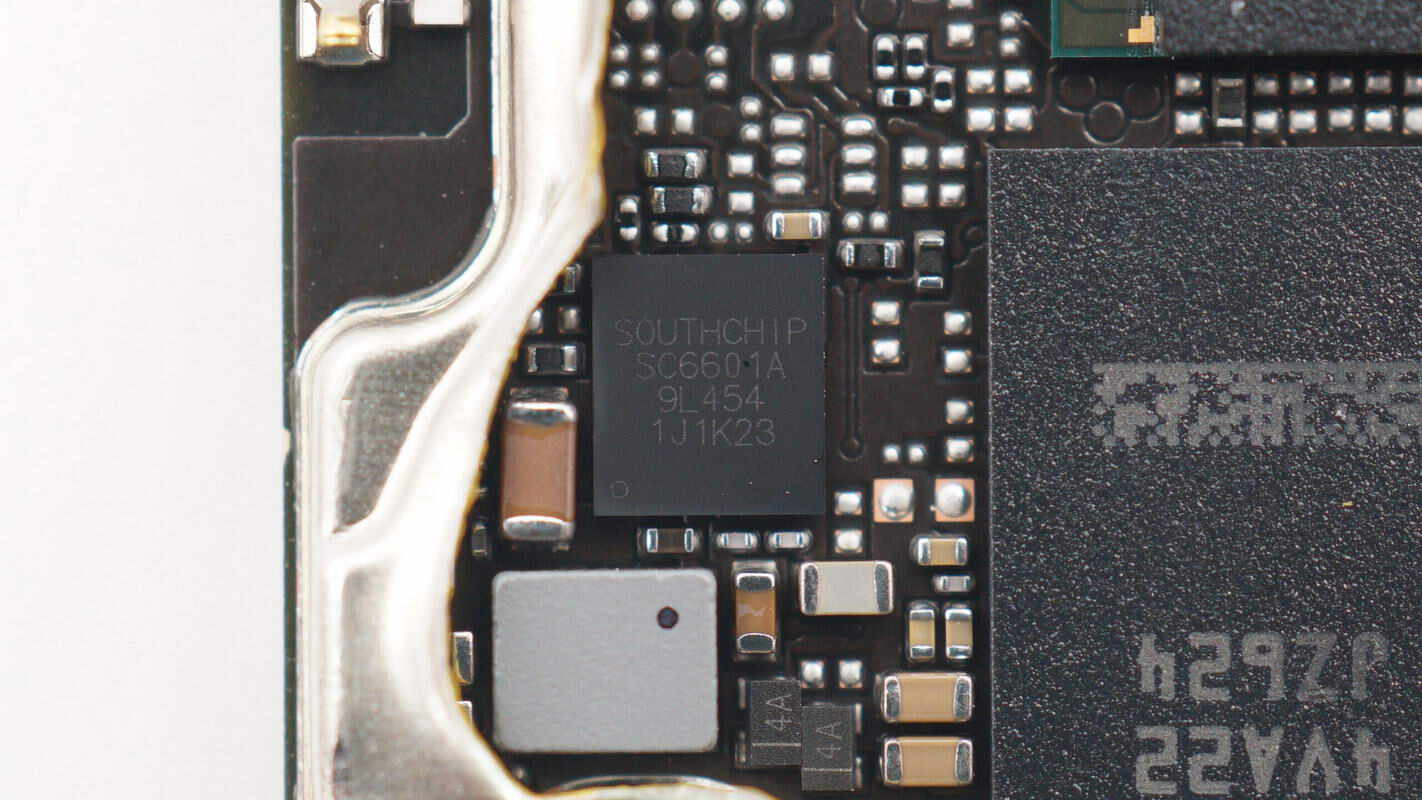
The charging chip, model SC6601A, is from SouthChip.
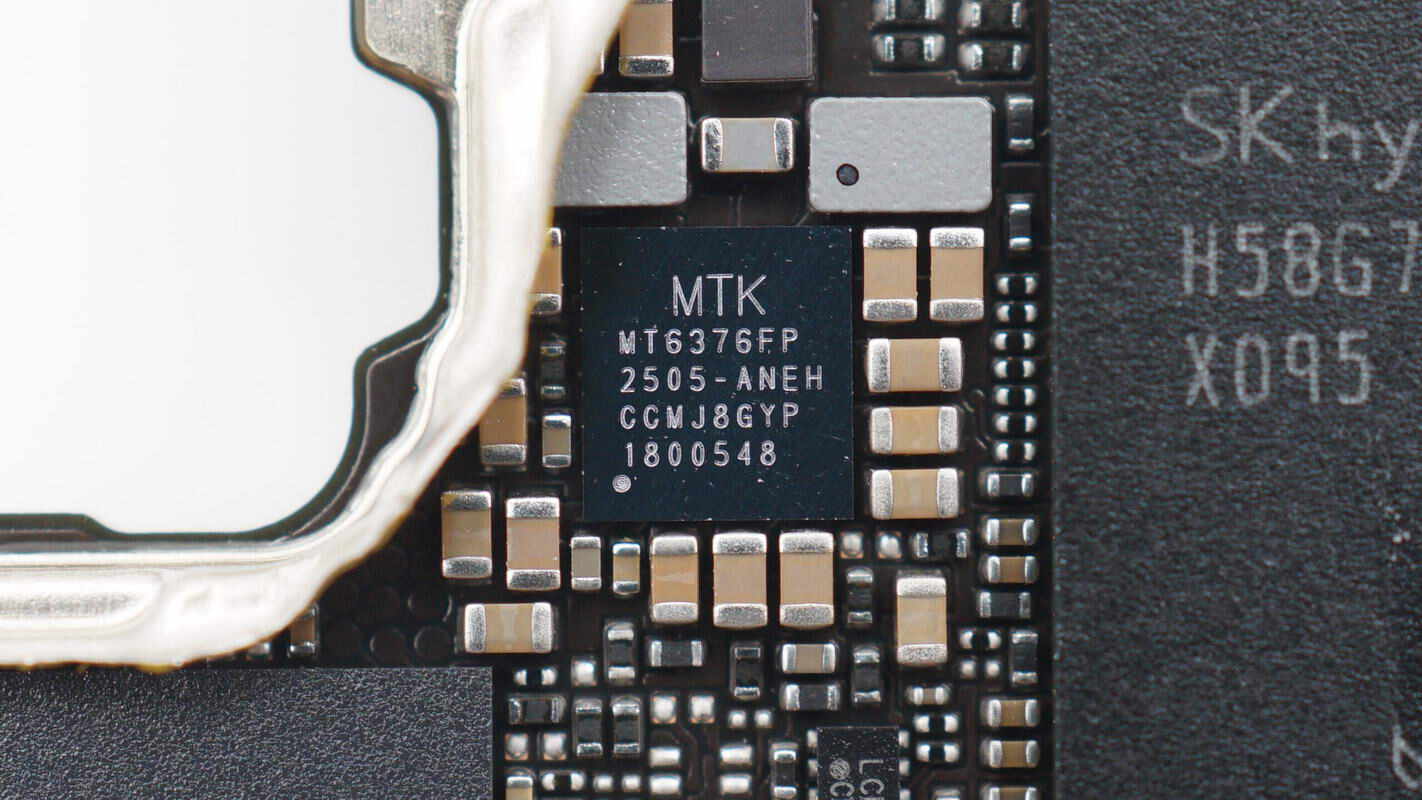
The power management chip is supplied by MediaTek, model MT6376FP.
After reviewing the mainboard and the Xring O1, let’s take a closer look at the phone’s internal design details.
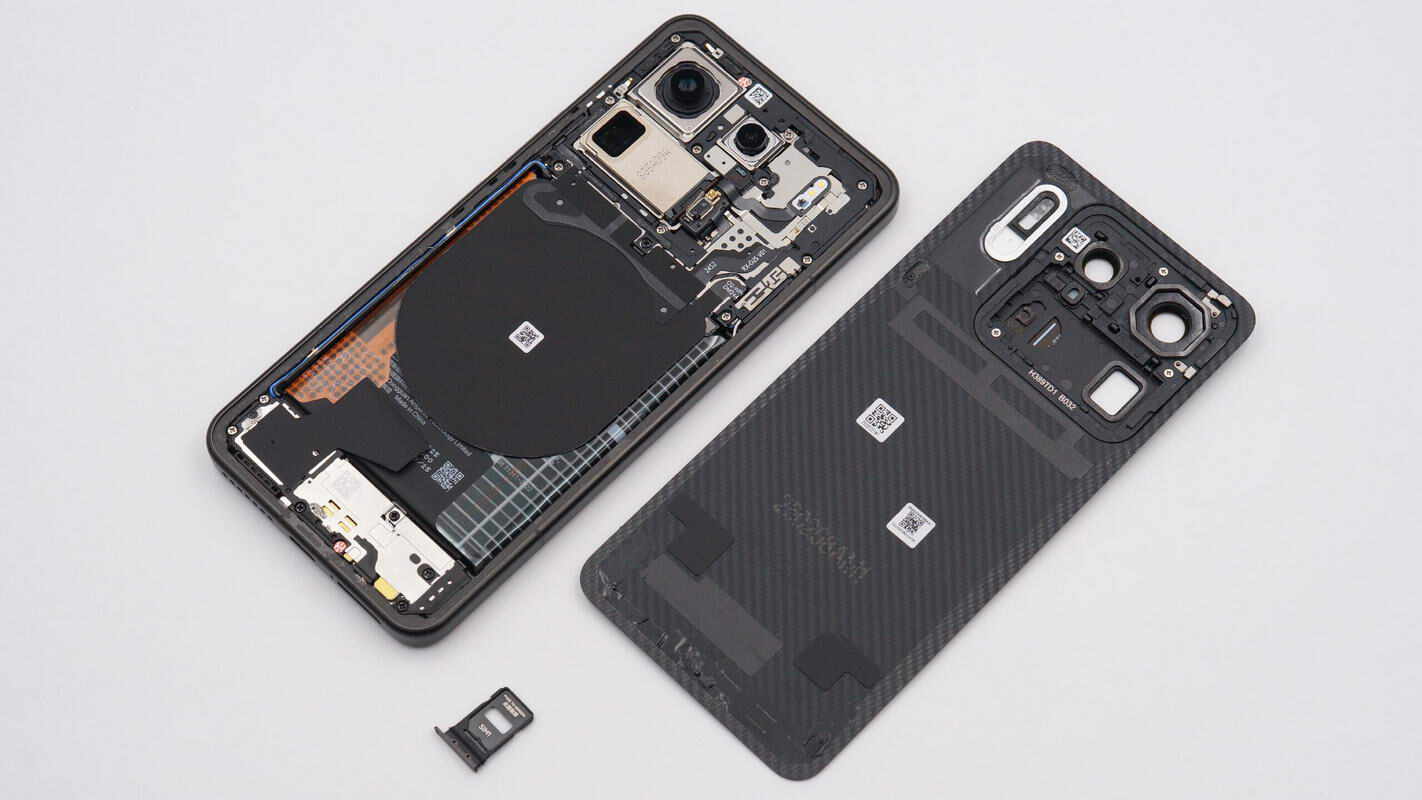
First, remove the back cover.
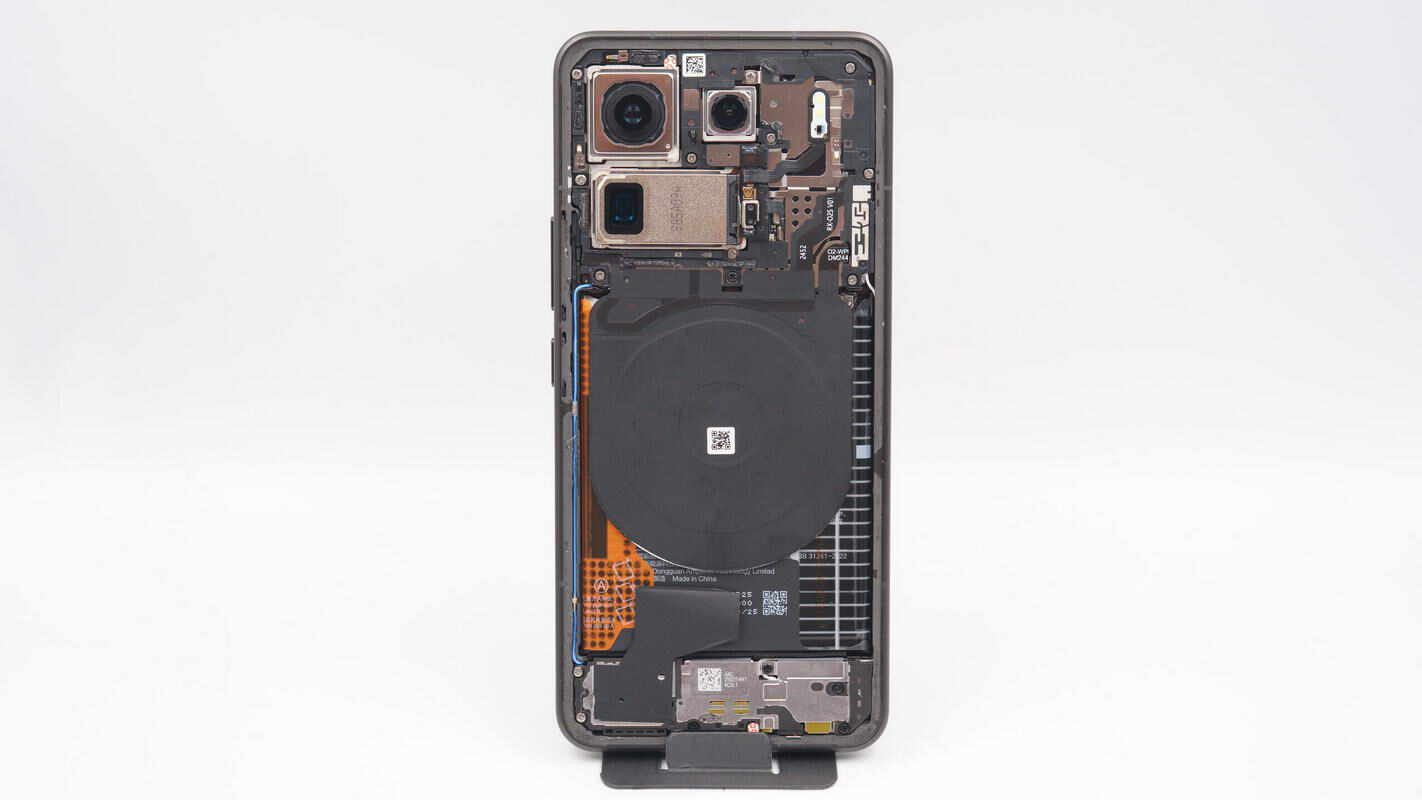
At the top of the rear are the camera module and mainboard, the middle section houses the battery and wireless charging coil, and the bottom contains the daughterboard and speaker.
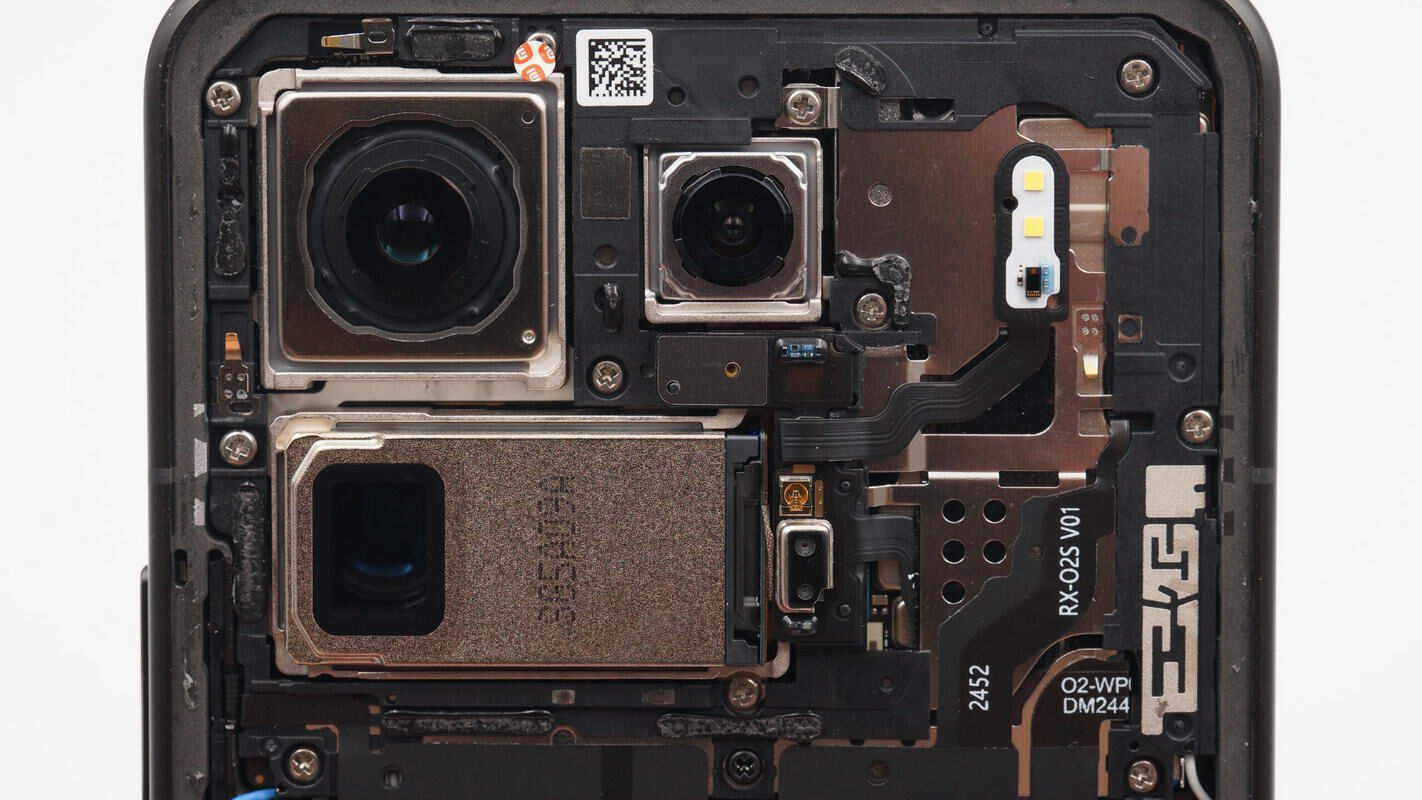
A pressure plate is installed above the mainboard and secured with screws, which are covered with tamper-evident stickers.
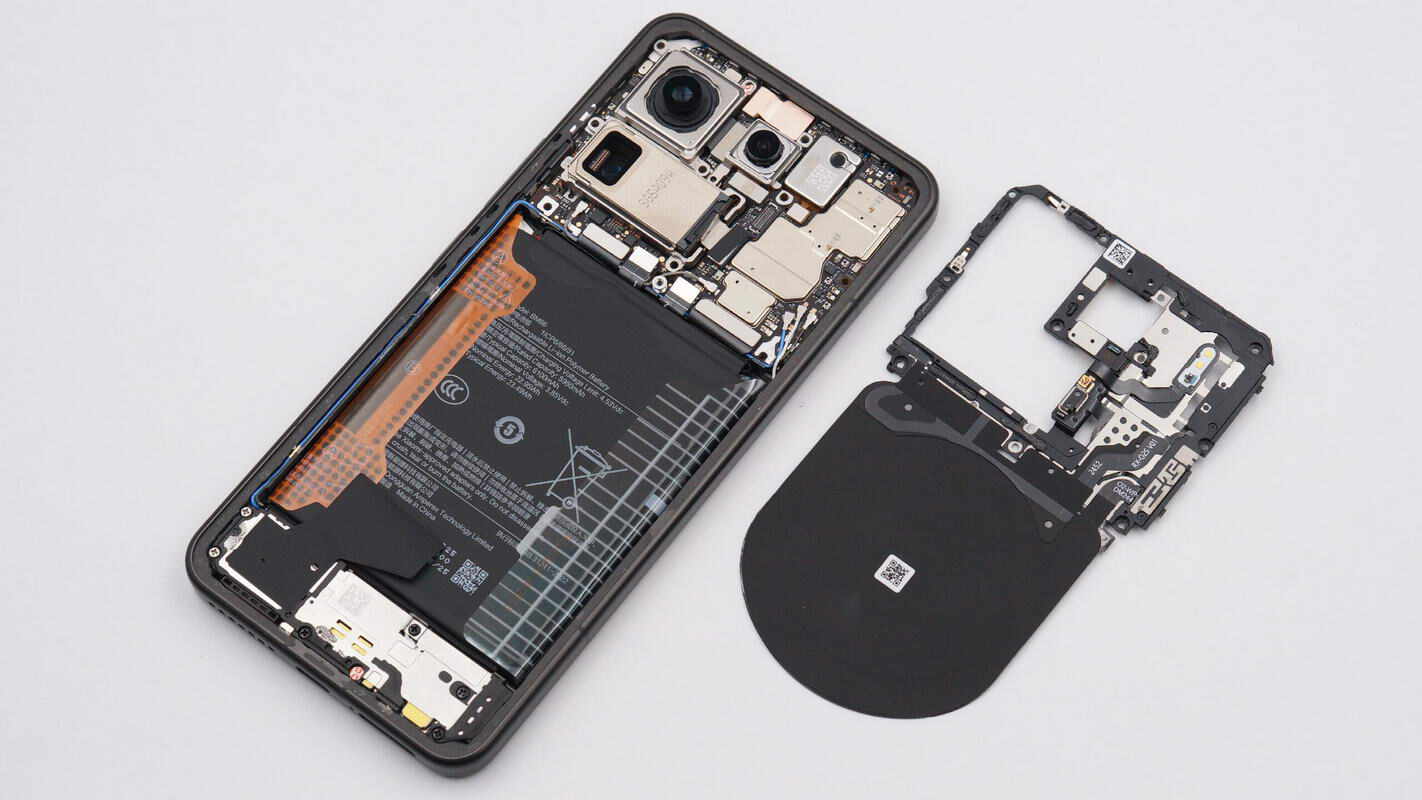
After unscrewing the screws, remove the mainboard pressure plate. The pressure plate is connected to the wireless charging coil and houses the sensor and fill light components. Inside the pressure plate, a flat cable connects the fill light and sensor components.
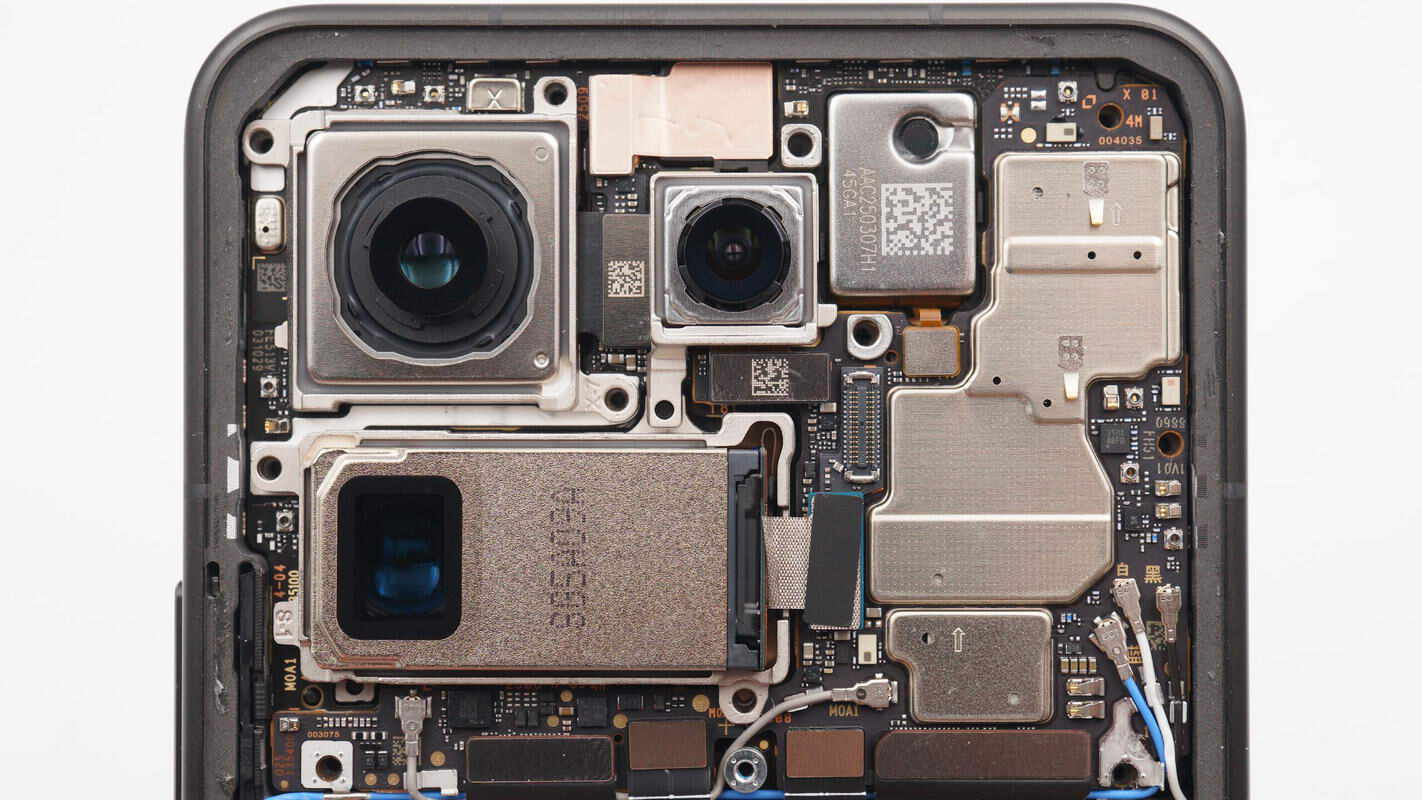
All three camera modules are equipped with metal anti-roll cages, with the mainboard located beneath these cages. Each module is secured with screws. The setup includes a 23mm main camera, a 14mm wide-angle lens, a front-facing camera, and a 120mm periscope telephoto lens.

Disconnect the speaker flat cable and remove the mainboard, which has thermal paste applied in the corresponding areas. The top microphone is sealed with a black foam gasket, and the side buttons use contact connectors. A thermal pad is placed at the position of the main camera, while the periscope telephoto camera area reveals a vapor chamber heat spreader.
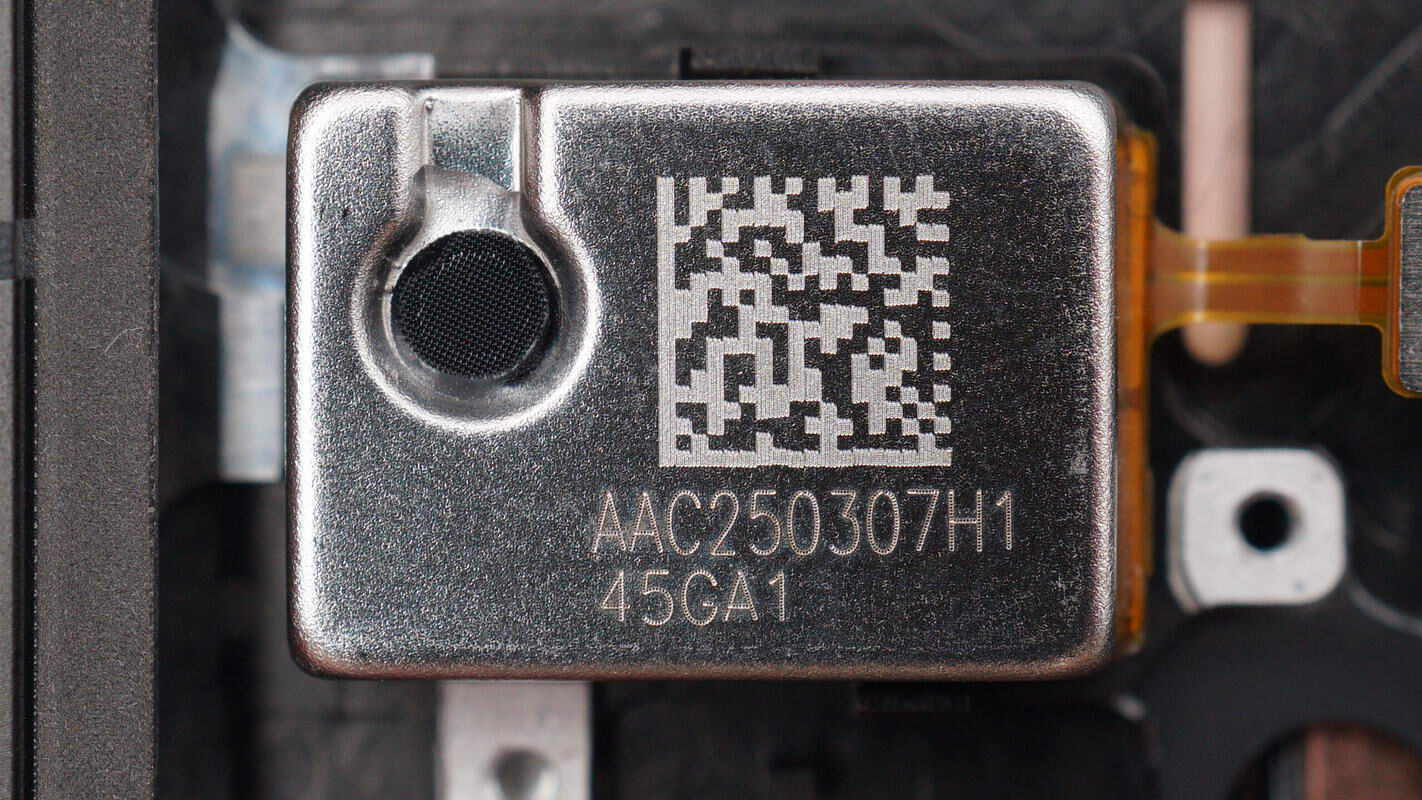
The speaker is supplied by AAC Technologies, model 1014B, featuring a full-metal enclosure.
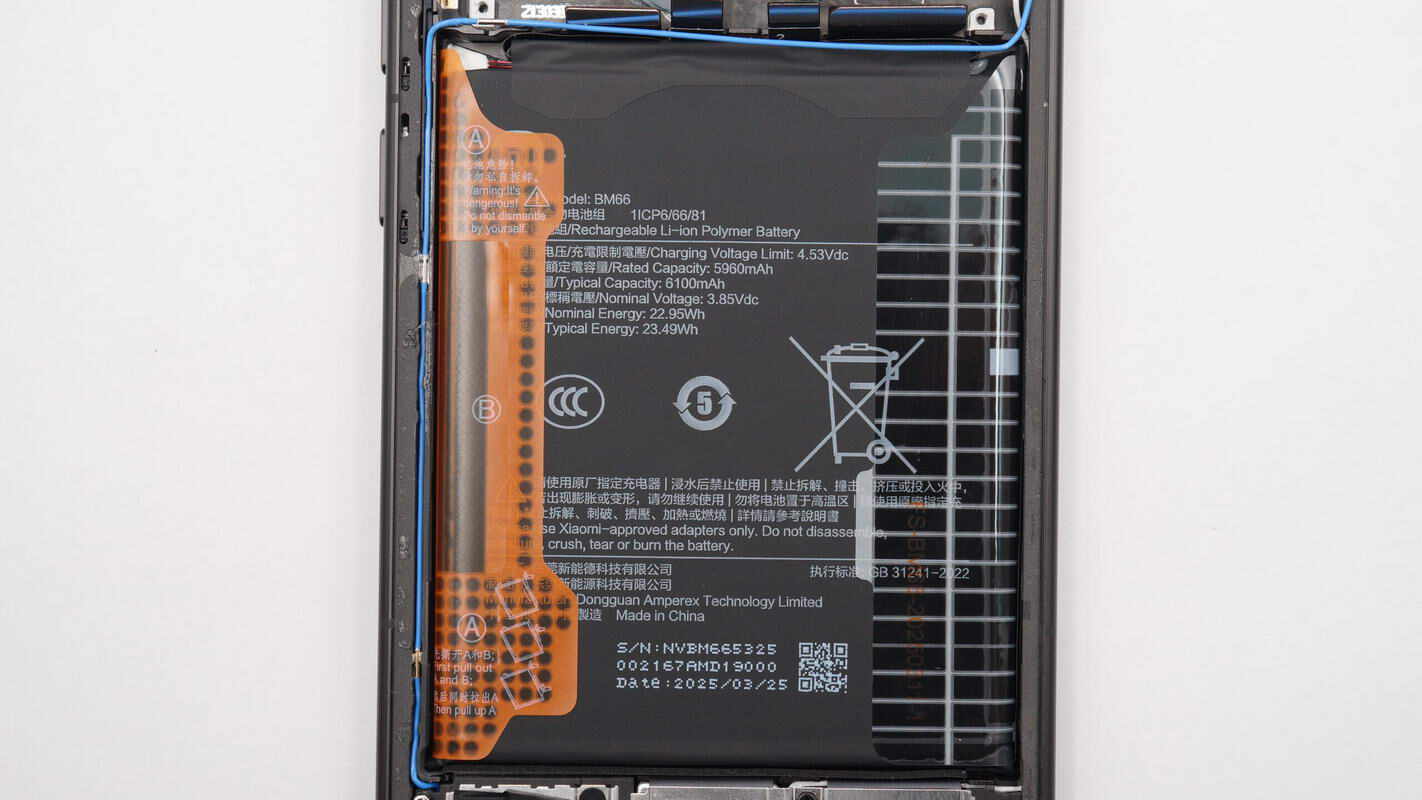
The battery uses a single-cell dual-interface design with a charging cutoff voltage of 4.53V. It has a rated capacity of 5960mAh and a typical capacity of 6100mAh, with a nominal voltage of 3.85V. The rated energy is 22.95Wh, and the typical energy is 23.49Wh. The battery is supplied by Dongguan Xinnengde Technology Co., Ltd.
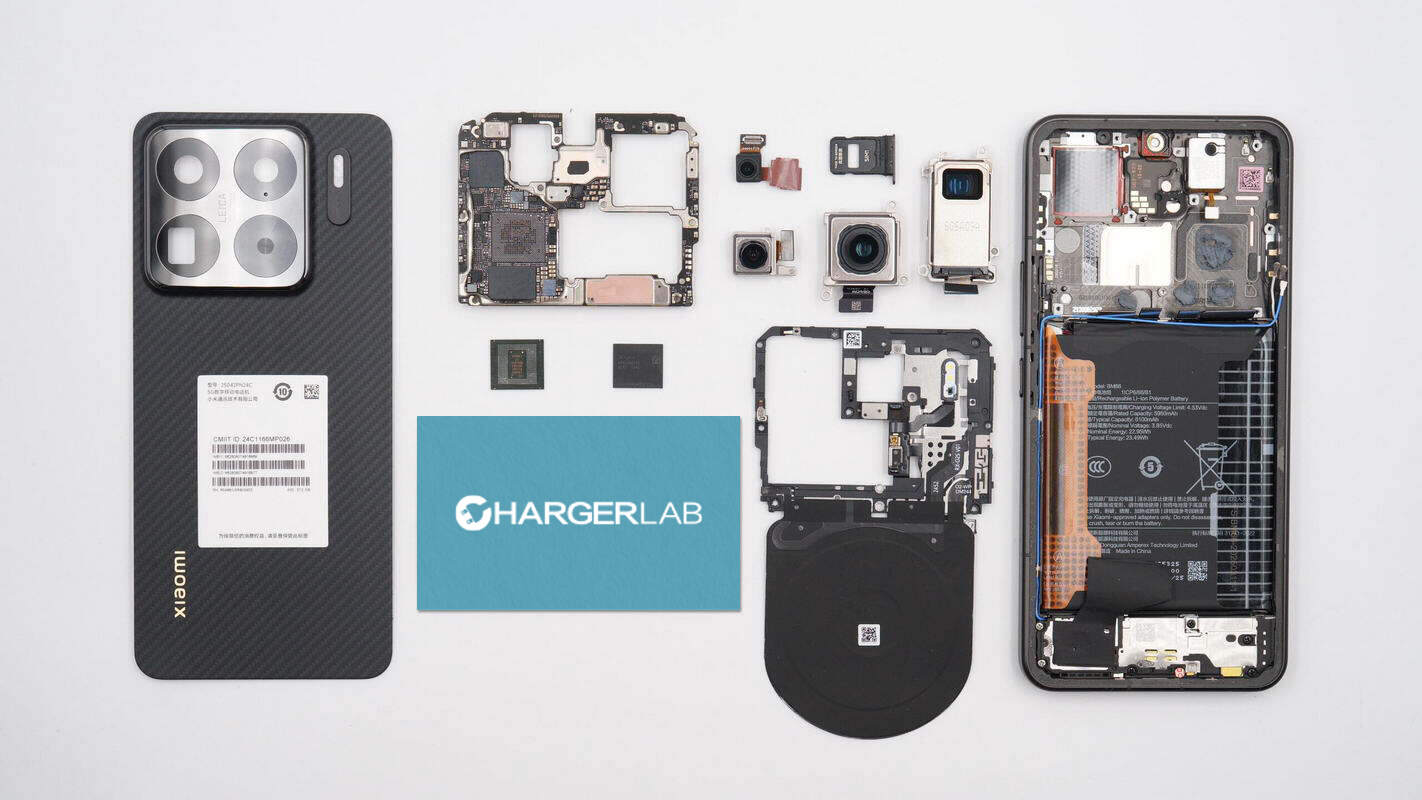
Well, those are components of the Xiaomi 15S Pro 15th Anniversary Edition.
Summary of ChargerLAB
As a commemorative product for Xiaomi Group’s 15th anniversary, the Xiaomi 15S Pro is equipped with Xiaomi’s self-developed SoC, the Xring O1, fully showcasing the company’s years of technological expertise and determination to compete with the world’s leading tech giants. The launch of this SoC significantly enhances Xiaomi’s competitiveness in the high-end market, marks a milestone in the group’s major chip development efforts, and represents a crucial step forward on Xiaomi’s path to the premium segment.
After taking it apart, we found that the Xiaomi 15S Pro houses the Xring O1 processor, paired with SK Hynix LPDDR5T memory and Micron UFS 4.1 storage. On the back of the Xring O1, four silicon capacitors from Empower Semiconductor are soldered. Thanks to their ultra-thin profile and high-performance characteristics, these silicon capacitors provide stable power delivery to the processor, helping the flagship chip fully unleash its performance.
Related Articles:
1. 90W Wired + 50W Wireless | Charging Review of Xiaomi 15 Pro
2. Wireless Charging Review of Xiaomi 15 Pro
3. Compatibility Test of Xiaomi 15 Pro


